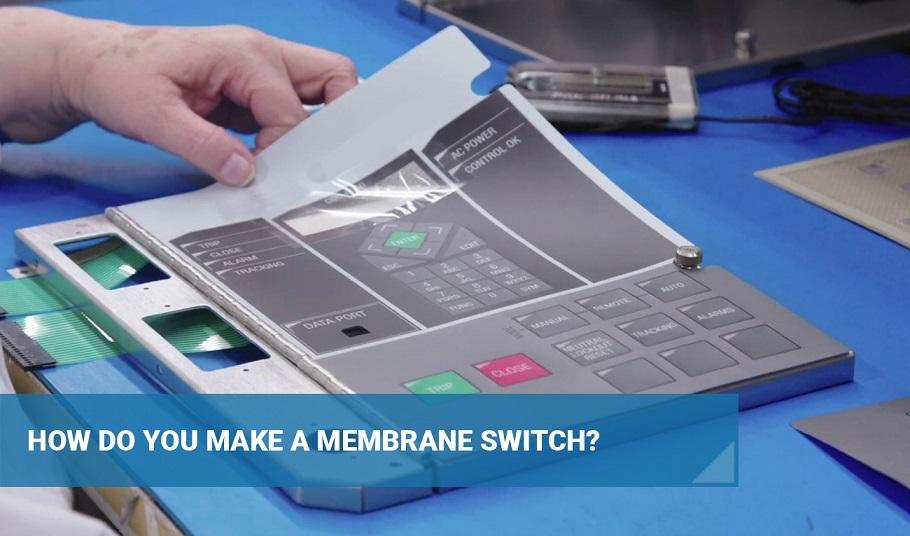Check Out Various Kinds Of Membrane Switch Technologies for Your Demands
Check Out Various Kinds Of Membrane Switch Technologies for Your Demands
Blog Article
Just How Membrane Switches Over Contribute to the Durability of Electronic Control Panels
Membrane buttons play an essential role in improving the toughness of digital control panels, mainly via their multi-layered building which supplies reliable security against environmental aspects such as moisture and dust. The lack of relocating components significantly decreases the likelihood of mechanical failings, making membrane switches over ideal for requiring applications.
Interpretation of Membrane Switches

Membrane switches are made to be slim and light-weight, making them ideal for applications where area is restricted. They can be made in various shapes, sizes, and colors, offering flexibility in layout that satisfies aesthetic and practical needs. Furthermore, membrane switches can integrate various technologies, such as tactile comments and LED indications, boosting customer experience.
As a result of their construction, membrane layer buttons are typically immune to dust, wetness, and basic wear, contributing to their resilience popular settings. Their smooth layout not only promotes simple cleansing however also decreases the risk of mechanical failure, making them a recommended selection for suppliers seeking trustworthy interface in their digital control panels.
Protection Versus Environmental Variables
The design of membrane changes naturally supplies a degree of protection versus different environmental factors, which is essential for maintaining functionality in difficult problems - Membrane Switch. These switches are normally created with layers of adaptable materials that secure inner parts from dampness, dust, and contaminants. By encapsulating the circuitry, membrane layer switches over decrease the danger of brief circuits and corrosion, which can dramatically impair efficiency
Moreover, making use of durable adhesives and sealers during production improves their resistance to environmental challenges. Membrane switches can withstand exposure to chemicals and solvents, making them ideal for sectors such as food handling and health care, where hygiene and sanitation are extremely important. Their seamless surface design additionally stops the buildup of dirt and microorganisms, facilitating easier cleansing and upkeep.
Temperature changes are an additional ecological issue, and membrane switches are crafted to work successfully across a large range of temperatures (Membrane Switch). This flexibility makes sure that control panels remain operational in different setups, from industrial settings to customer electronics
Effect On User Communication
User interaction with digital control board is significantly affected by the style and check over here performance of membrane switches. These buttons provide a tactile interface that enhances the overall individual experience, permitting user-friendly navigating and control. Their responsive nature makes certain that users obtain prompt responses upon activation, which is important for jobs requiring i thought about this precision and performance.
Additionally, the smooth surface area of membrane switches over promotes easy cleansing and upkeep, advertising customer self-confidence in the dependability of the user interface. This tidiness is specifically essential in atmospheres where hygiene is paramount, such as medical or food handling settings. Additionally, the compact and lightweight style of membrane switches adds to the aesthetic appeal of control board, motivating user involvement with a modern-day and streamlined look.
Furthermore, the integration of visual elements, such as published icons and backlighting, aids users promptly determine features, minimizing the learning curve related to brand-new equipment. Therefore, customers can operate tools better, resulting in boosted efficiency and contentment. In summary, membrane layer switches play an essential role in improving customer interaction by combining functionality, appearances, and ease of use, ultimately leading to boosted operational effectiveness.
Style Flexibility and Modification
Style flexibility and customization are important elements of membrane switches, enabling manufacturers to tailor digital control panels to details applications and customer requirements. This adaptability permits the assimilation of numerous design aspects, such as shades, graphics, and textures, which can boost the aesthetic allure and individual engagement of the control panel.
Membrane buttons can be customized in shapes and size, accommodating a variety of gadgets and applications, from industrial equipment to customer electronic devices. This versatility makes sure that suppliers can produce user-friendly user interfaces that align with individual expectations and functional requirements. Additionally, the ability to incorporate special functions such as backlighting or tactile responses further boosts functionality, enabling a more interactive experience.
Furthermore, the production procedure for membrane layer switches over supports the fast prototyping of layouts, making it possible for suppliers to iterate and improve their principles promptly. This ability not only increases the growth timeline however also ensures that the end product fulfills particular practical and aesthetic requirements.

Cost-Effectiveness and Longevity
Cost-effectiveness and durability are substantial benefits of membrane layer buttons, making them an appealing alternative for suppliers and end-users alike. These buttons are generally more economical to generate than traditional mechanical switches, largely as a result of their simplified production procedures and the minimized number of components required. This cost benefit expands not just to initial manufacturing yet also to lasting operational expenditures, as membrane layer buttons usually require much less maintenance and have a address reduced failure price.
In addition, the long life of membrane switches adds to their general worth. Built from sturdy materials, they are immune to ecological variables such as wetness, dust, and chemicals, which can bring about early wear in other button types. The absence of moving parts lessens mechanical failure, enabling membrane layer switches to preserve performance over prolonged periods.
This resilience is particularly beneficial in applications requiring constant efficiency under demanding problems, such as medical tools and industrial devices. Eventually, the mix of cost-effectiveness and longevity makes membrane switches an economically viable option for manufacturers, providing trusted solutions that stand up to the examination of time while maximizing financial factors to consider.
Conclusion
In conclusion, membrane layer buttons dramatically boost the toughness of digital control panels with their durable building and safety features - Membrane Switch. Overall, membrane layer changes represent a dependable and affordable selection for boosting the durability and performance of electronic control systems.
Report this page